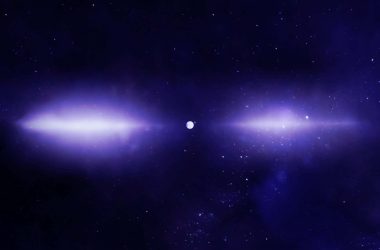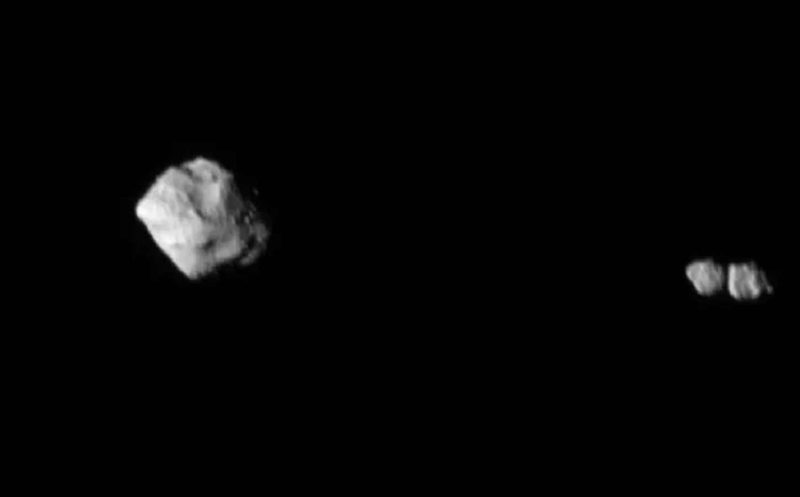The asteroid Dinkinesh and its binary contact satellite
NASA/Goddard/SwRI/Johns Hopkins APL
The asteroid Dinkinesh, which was recently visited by NASA’s Lucy spacecraft, has surprised scientists by revealing a peculiar satellite system. Initially thought to be a single moon named Selam, further analysis of the data sent back to Earth by Lucy has uncovered that the moon is, in fact, a contact binary – two separate objects touching at their ends.
A New Type of Binary System
This discovery marks the first time a binary system of this nature has been observed orbiting an asteroid. The contact binary, which exhibits a peanut-like shape, is composed of two similar-sized rocks connected at their ends. The peculiar nature of this binary system has left scientists intrigued and puzzled.
Unexpected Characteristics
Hal Levison, head of the Lucy mission and an expert at the Southwest Research Institute in Colorado, expressed his surprise at the discovery, stating, “All of these rocks are going to be their own individuals, but I must admit I would have never expected to have a bilobed satellite like this.”
Furthermore, the unusual properties of the satellite have raised questions about the current understanding of the formation of celestial bodies. The processes that typically shape small satellites are not expected to result in multiple objects of similar sizes. Additionally, the manner in which the two rocks are connected suggests a low-speed collision, defying conventional expectations.
Implications for Planetary Formation Theories
Levison emphasized the significance of studying such small bodies, referring to them as a “laboratory of all the physics” essential for understanding the formation of planets. He highlighted that the enigmatic nature of Selam’s satellite system could challenge existing theories about planetary formation, urging a re-evaluation of our current understanding.
Future Missions and Anticipated Findings
The Lucy spacecraft is scheduled to visit eight more asteroids during the remainder of its mission. This includes one more asteroid in the main asteroid belt and seven asteroids known as Trojans, which share Jupiter’s orbit. Levison anticipates that these upcoming encounters will yield a multitude of surprises and unexpected discoveries, as each asteroid system has undergone unique evolutionary processes.
Correction
The spelling of Selam has been corrected in the updated article released on 8 November 2023.








